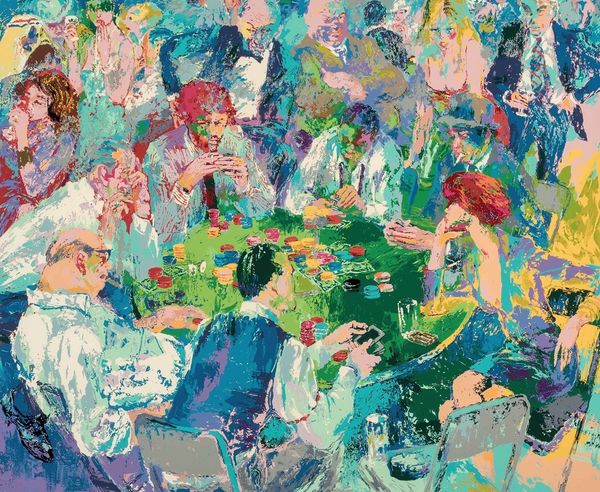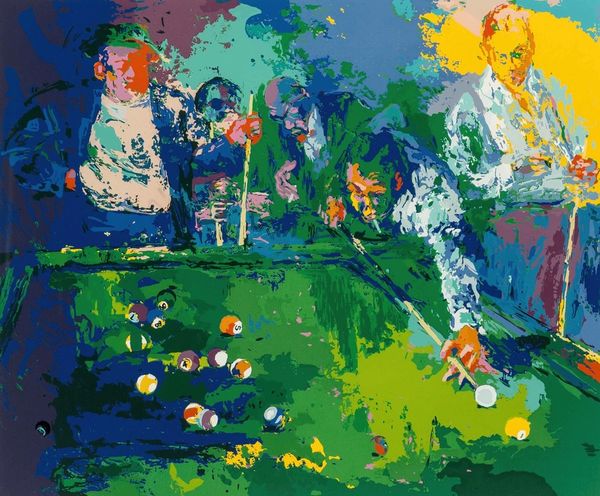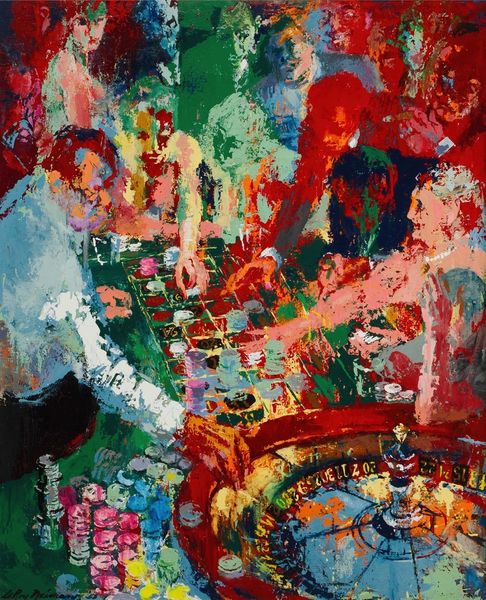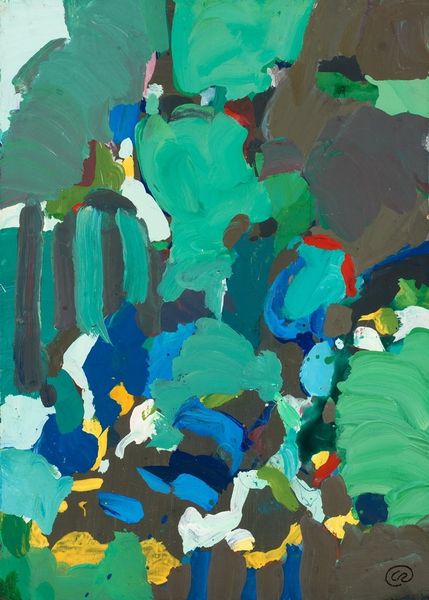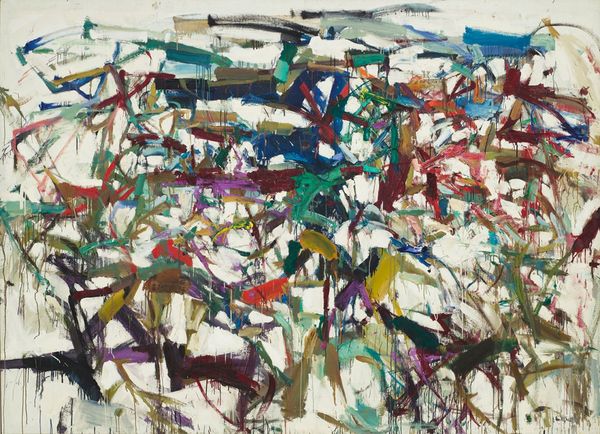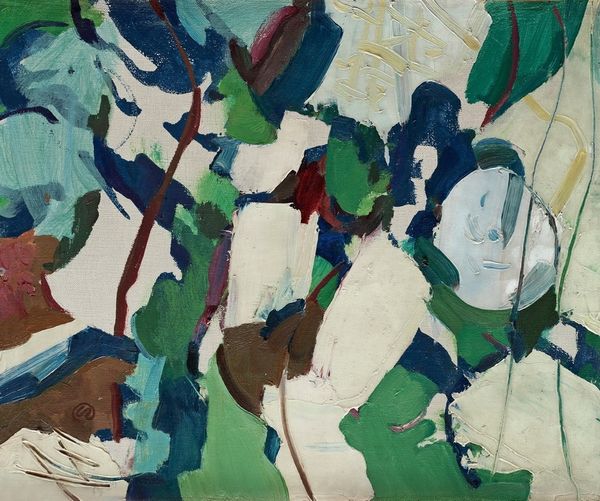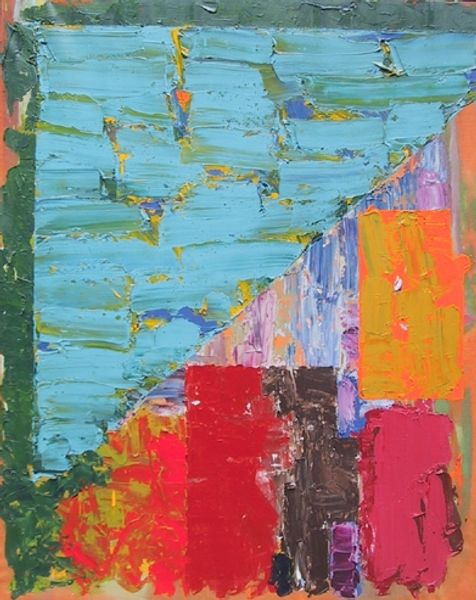
Copyright: Modern Artists: Artvee
Editor: This is LeRoy Neiman's "Bistro Garden," created in 1987 using acrylic paint. The figures feel very lively! I'm struck by how much is going on in this seemingly simple scene. What do you see in this piece that perhaps I'm missing? Curator: I see a deliberate staging of social theatre. Neiman's snapshot aesthetic, influenced by post-impressionism and expressionism, elevates the casual scene of leisurely dining into a study of class, gender, and performance. Note how the women are actively performing elegance through dress and gesture, in contrast to the waiters’ active labor of servicing this space. What social power dynamics might be at play here, especially in the late 80s when conspicuous consumption was rampant? Editor: So, beyond just a colorful painting of a restaurant, you're saying Neiman is commenting on social roles and perhaps critiquing the disparities he observes? Curator: Precisely. The vibrant colors and impasto technique create a visually appealing surface, almost a distraction. But look closer – the blurred figures, the sharp contrasts...they hint at the fleeting and somewhat performative nature of these social gatherings. Is there a commentary on fleeting pleasure versus the lasting realities of the socio-economic system? Editor: I see that tension now. The bright colors initially suggest carefree joy, but the social stratification definitely complicates that. The waiter pouring champagne is central but somehow also excluded. Curator: Yes, the spatial relationships emphasize that imbalance. Thinking about feminist theory, consider also who this space is ultimately designed for. Whose comfort is being prioritized? Editor: It makes me think about how public spaces often subtly reinforce existing power structures. I initially saw it as just a nice scene, but now I see layers of complexity. Thank you! Curator: It is a reminder that even seemingly innocent snapshots of leisure can reveal profound societal commentaries if we’re willing to engage with the history and critical theory behind it.
Comments
No comments
Be the first to comment and join the conversation on the ultimate creative platform.
